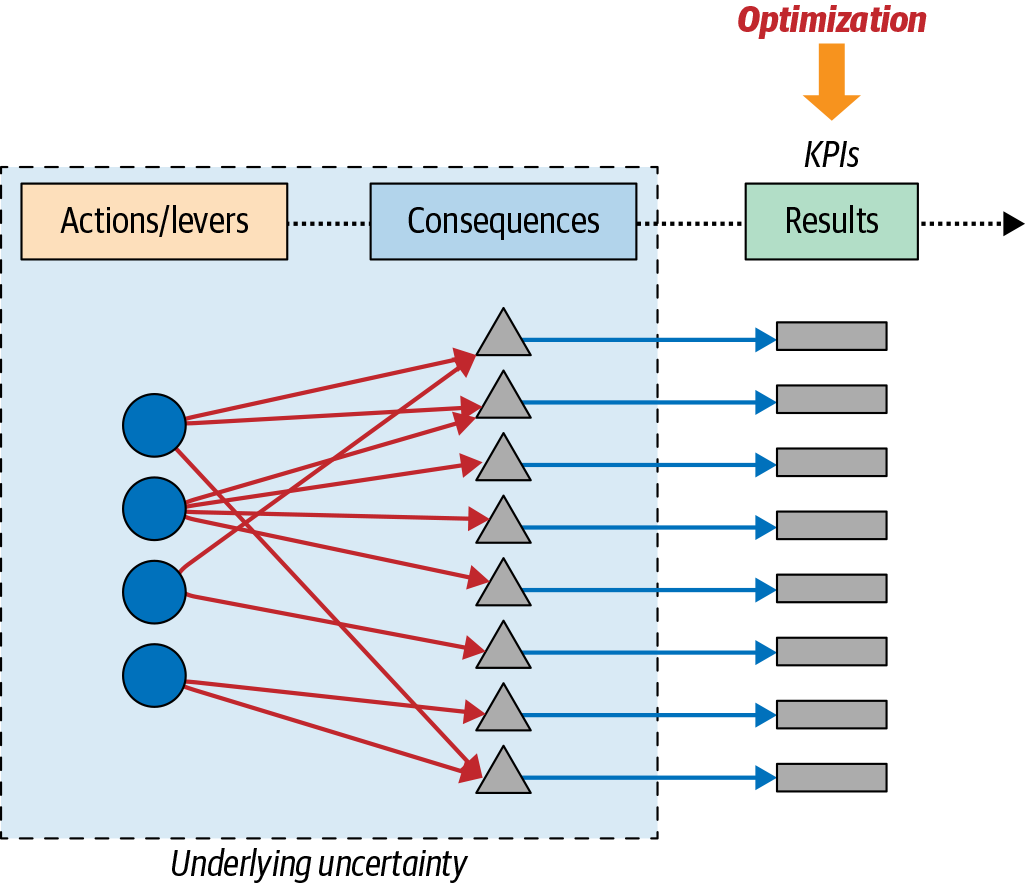Chapter 7. Optimization
After all this work, we’ve finally arrived at the prescriptive stage, the moment where we’re finally ready to make the best decision possible. Or at least that’s our aim: it won’t come as a surprise that at the beginning we may make some simplifying assumptions to gain a better understanding of each problem, which can be relaxed as we feel more comfortable solving more complex versions. But first we should review some concepts from optimization theory that will be handy.

Figure 7-1. Optimization
What Is Optimization?
Optimization is about finding minima or maxima of some predefined objective function. The objective function is what you would’ve imagined: a mathematical function that maps our levers to our business objective. Since our aim is to make the best decision possible, it is almost natural that some knowledge of optimization theory will be of help.
There are cases where the problem we seek to optimize is relatively easy. Take the case of finding the maximum of two numbers: say 5 and 7. We can immediately see that the second number is larger, so if there were associated levers we would chose the second one. In any binary decision, this is all it takes in relation to the optimization stage.
If there are finitely many numbers, we can again sort them and readily find the maximum or minimum. It may take some time and we may not do it by hand, but there ...
Get Analytical Skills for AI and Data Science now with the O’Reilly learning platform.
O’Reilly members experience books, live events, courses curated by job role, and more from O’Reilly and nearly 200 top publishers.

